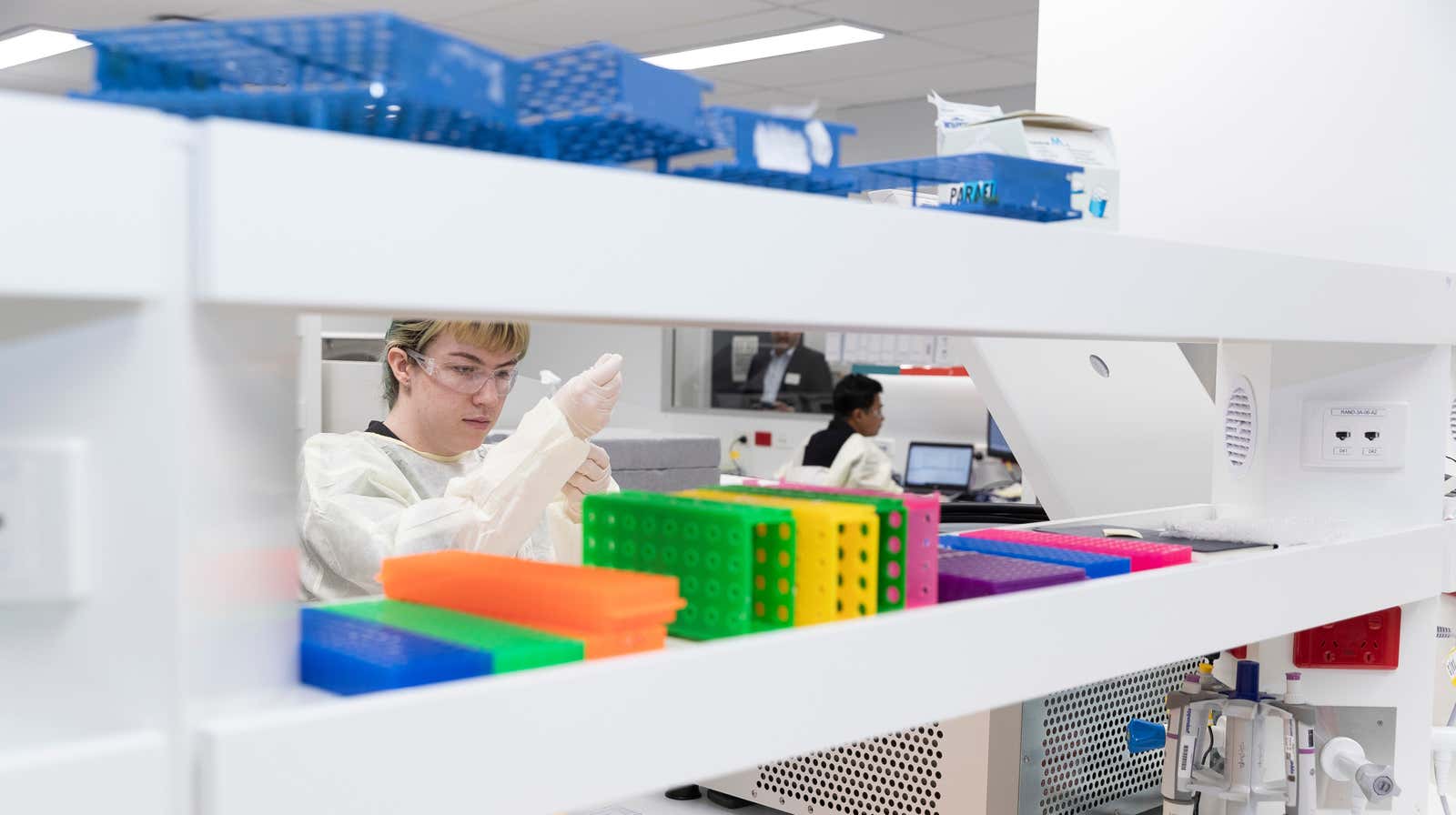Does This Mean We Have a Vaccine?

Pfizer and BioNTech announced today that their vaccine candidate appears to be 90 percent effective in preventing COVID-19 in the volunteers who participated in their study. This is encouraging news, but there is still a long way to go between this announcement and a truly effective vaccine available.
What vaccine candidate is it?
The Pfizer vaccine is one of four currently being tested in the United States. Two vaccine candidates, including the Pfizer vaccine, use mRNA in place of proteins or whole viruses. This is a new type of vaccine that has never been approved before.
It also requires ultra-cold storage rather than being stored in standard refrigerators or freezers. This poses a logistical challenge, but it can be solved with innovations such as the delivery of vaccines in dedicated refrigerators.
The vaccine requires two doses given three weeks apart.
What do we know so far
Ongoing results from a Phase 3 trial , the final phase of testing before vaccine has the potential to be approved or approved for use in an emergency. The trial is not over yet; this is an interim analysis.
The results have not been peer reviewed and not even Pfizer scientists have access to the complete data. (The Independent Review Board reported partial results to them; maintaining this separation ensures that no company can change its actions or interpretations in the course of litigation.)
In a statement and in a conversation with reporters, Pfizer told us:
- 94 people in the study had cases of COVID-19, mostly in the control group.
- The vaccine is 90% effective.
- The trial will continue until a total of 164 cases have been counted.
- They may have enough data to apply for an emergency use permit at the end of November.
According to previous studies, side effects of the vaccine include fever, chills, and body aches. The STAT reports that side effects are likely to be similar to those of other adult vaccines, but perhaps slightly worse than what we experience with a flu shot.
What we still don’t know
We don’t know if the efficiency will still be at 90% by the time the trial ends. If so, or if it’s close by, it’s a huge success. Regulators were hoping for something above 50%.
We do not know how well the vaccine prevents severe cases of COVID-19, only that it appears to be effective in preventing cases in general. ( It’s likely that a vaccine that prevents cases of illness will prevent severe cases or make them less serious, as with the flu shot, but we won’t know until we get the data.)
We also don’t know if the vaccine prevents infections , but we do. If you’ve contracted the coronavirus, you have an infection and you can probably transmit the disease even if you’ve never had symptoms. A vaccine that prevents infections can stop the spread of the virus; a vaccine that only prevents infections from progressing to disease may not slow down the spread very much, but may only limit its effects.
We still have little information on side effects, including potentially serious ones.
We don’t know how long the protection will last. Several months? Some years? It is impossible to answer this question with data from just a few months.
The study populations were not representative of the entire US, although they said that 42% of the total participants were of “different origins.”
We don’t know how well the vaccine will work for children; no one under 12 years of age participated in the research.
The research protocol described in this Pfizer document also ruled out anyone who had a serious health problem, was previously infected with COVID-19, was pregnant or breastfeeding. That’s a lot of high-risk people who weren’t in the study, but who will still need protection from the coronavirus. Pregnant women are more likely than their non-pregnant peers to suffer from severe COVID-19 .
What’s next
Pfizer says they plan to request an emergency use authorization from the FDA later this month, once they meet the requirement for at least half of the participants to be followed up for at least two months after receiving the last dose.
The Pfizer vaccine candidate is one of several, and there is no guarantee that it will be the first or only vaccine to end up on the market. It is possible that next year we will have to choose between four or five different vaccines. Some may perform better than others.
It takes time to produce doses of the vaccine, and regulators say the plan for any vaccine is to first make it available to people who are at high risk, although there is no clear plan yet as to who these first recipients will be. The most optimistic time frame suggests that a vaccine – maybe this one, maybe another – could be available as early as January 2021 .